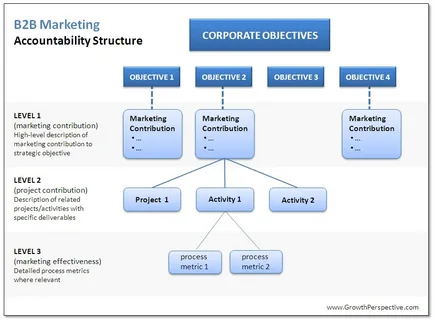Strategies for Effective Account-Based Marketing in B2B

Introduction
In the ever-evolving landscape of B2B marketing, account-based marketing (ABM) has emerged as a powerful strategy to engage and convert high-value accounts. This article explores key strategies for implementing effective account-based marketing campaigns, focusing on personalized approaches, targeted messaging, and seamless collaboration between marketing and sales teams.
Understanding Account-Based Marketing (ABM)
Account-based marketing is a strategic approach that aligns marketing efforts with the specific needs and characteristics of individual target accounts. Unlike traditional mass marketing, ABM prioritizes personalized interactions to build stronger relationships and drive business growth. The core principles of ABM include identifying high-value accounts, creating tailored campaigns, and fostering collaboration between marketing and sales teams. For businesses looking to enhance their ABM strategies, partnering with experienced B2B marketing agencies can provide valuable insights and resources
The ABM Funnel: From Awareness to Advocacy
The ABM funnel mirrors the traditional marketing funnel but with a more concentrated and targeted approach. It progresses from creating awareness and generating interest to engaging and converting high-value accounts. Ultimately, successful ABM campaigns aim to turn clients into advocates who actively promote the brand within their organizations.
Identifying High-Value Accounts
The foundation of successful ABM lies in identifying and prioritizing high-value accounts. Collaborate with sales teams to define criteria for ideal customers. Analyze historical data, assess potential for growth, and consider the alignment of the account with your product or service offering.
Personalized Content and Messaging
Tailor content and messaging to resonate with the unique needs and challenges of each target account. Develop personalized campaigns that address specific pain points, industry trends, and the individual goals of key stakeholders within the organization. Personalization builds rapport and positions your brand as a valuable partner.
Multi-Channel Engagement
Utilize a mix of channels to engage target accounts effectively. Combine personalized emails, social media interactions, targeted advertising, and direct outreach to create a comprehensive and cohesive engagement strategy. Consistent multi-channel communication increases brand visibility and strengthens relationships.
Leveraging Technology and Data
Deploy marketing technology and data analytics to gather insights about target accounts. Utilize customer relationship management (CRM) systems, predictive analytics, and account scoring tools to understand behavior, preferences, and engagement levels. These insights inform the development of more targeted and effective campaigns.
Sales and Marketing Alignment
Collaboration between sales and marketing teams is integral to ABM success. Foster open communication, shared goals, and joint planning sessions to ensure alignment. Establish a feedback loop for insights gained from sales interactions, helping refine and optimize ongoing ABM strategies.
Measurement and Optimization
Establish key performance indicators (KPIs) aligned with the objectives of your ABM campaigns. Measure the impact on engagement, conversion rates, and overall revenue generated from high-value accounts. Regularly analyze results and use data-driven insights to optimize and refine your ABM strategy for continuous improvement.
Customer Advocacy Programs
Transform satisfied customers into advocates by incorporating advocacy programs into your ABM strategy. Identify opportunities for customers to share success stories, participate in case studies, or speak at industry events. Peer recommendations and testimonials from satisfied clients carry significant weight in B2B decision-making.
Data Quality and Integration
Maintain accurate and up-to-date data for target accounts. Integrate data sources seamlessly to ensure a comprehensive view of each account. Address data quality issues promptly to avoid inaccuracies that could impact the success of your ABM campaigns.
Scalability
ABM traditionally focuses on a limited number of high-value accounts. However, advancements in technology and automation enable scalable ABM strategies. Implement tools that allow for efficient personalization at scale while maintaining the depth of engagement required for success.
AI-Powered Personalization
Artificial intelligence (AI) will play a crucial role in enhancing personalization in ABM. AI algorithms can analyze vast amounts of data to identify patterns and predict the content and messaging that will resonate most effectively with individual accounts.
Intent Data for Targeting
Leveraging intent data, which indicates the online behavior and engagement levels of target accounts, will become more prevalent in ABM. Marketers can use intent data to prioritize accounts showing active interest and tailor campaigns accordingly.
Successful ABM Implementation
Explore case studies of successful ABM implementations within your industry. Understand the strategies, challenges faced, and measurable outcomes achieved by organizations that have effectively executed ABM campaigns.
Learning from Setbacks
Examine instances where ABM campaigns faced challenges or setbacks. Identify common issues and learn from the experiences of others to proactively address potential pitfalls in your own ABM strategy.
Marketing and Sales Teams
Gather insights from marketing and sales teams involved in ABM initiatives. Understand their perspectives on collaboration, challenges faced, and the impact of ABM on achieving shared business objectives.
Target Accounts and Clients
Seek feedback from target accounts and clients who have been part of ABM campaigns. Understand their experiences, preferences, and the effectiveness of personalized approaches in influencing their decision-making process.
Conclusion
Account-based marketing in B2B is a dynamic and strategic approach that demands personalized engagement, collaboration, and a keen understanding of individual account needs. By embracing the key strategies outlined, overcoming challenges, and staying abreast of emerging trends, B2B marketers can unlock the full potential of ABM to drive meaningful and lasting relationships with high-value accounts.





